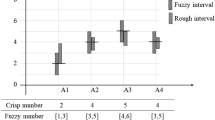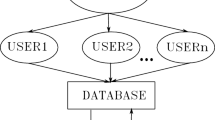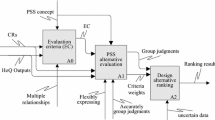Abstract
The inherent dynamic relationships among design tasks performed concurrently at different organizations characterize the complexities of a design chain where designers with diverse expertise need to collaborate across organizational boundaries. To ensure timely completion of inter-related design tasks, metrics to facilitate the early evaluation of design concepts are crucial. The ability to evaluate and select suitable design concepts at an early stage will ensure better solutions and greater savings in time and effort further downstream. This paper proposes a new approach based on the rough set theory to design concept analysis. The approach aims at early detection of design inadequacy. A so-called information system is constructed using the information gleaned from design concepts and design capabilities, and analyzed using the rough set theory to derive a set of design rules for design concept analysis. The approach embodies a technique for handling attributes with unavailable information, which is a frequent occurrence in design. This paper presents details of the proposed approach, the novel technique, and a case study.
Similar content being viewed by others
References
Khoo LP, Zhai, LY (2001) Multiconcept classification of diagnostic knowledge to manufacturing systems: analysis of incomplete data with continuous-valued attributes. Int J Prod Res 39(17):3941–3957
Pawlak Z (1982) Rough sets. Int J Comput Inf Sci 11:341–356
Komorowski J, Pawlak Z, Polkowski L, Skowron A (1999) Rough sets: a tutorial. In: Skowron A (ed) Rough Fuzzy Hybridization. Springer, Berlin Heidelberg New York, pp 3–98
Pawlak Z (1996) Why Rough Sets? In: Proceedings of the Fifth International Conference on Fuzzy Systems, vol 2, New Orleans, LA, pp 738–743
Ulrich KT, Eppinger, SD (2000) Product design and development. Mc-Graw Hill, New York
Hundal MS (1997) Systematical mechanical designing: a cost and management perspective. The American Society of Mechanical Engineers Press, New York
Kryszkiewicz M (1998) Rough set approach to incomplete information systems. Inf Sci 113:39–49
Zhai LY, Khoo LP, Fok SC (2001) Derivation of decision rules for the evaluation of product performance using genetic algorithms and rough set theory. In: Braha D (ed) Data Mining for Design and Manufacturing. Kluwer Academic Publischer, New York, pp 337–353
Kusiak A, Kern JA, Kernstine KH, Tseng, BTL (2000) Autonomous decision-making: a data mining approach. IEEE Trans Inf Technol Biomed 4(4):274–284
Nguyen HP, Le LP, Santiprabhob P, De Baets B (2001) Approach to generating rules for expert systems using rough set theory”, Joint 9th IFSA World Congress and 20th NAFIPS International Congress, vol 2, Vancouver, Canada, 2 July 2001, pp 877–882
Lee S, Vachtsevanos G (2002) An application of rough set theory to defect detection of automotive glass. Math Comp Simul 60:225–231
Mollestad T, Komorowski J (1999) A rough set framework for mining propositional default rules. In: Skowron A (ed) Rough fuzzy hybridization. Springer, Berlin Heidelberg New York, pp 233–262
Grzymala-Busse JW, Hu M (2000) A comparison of several approaches to missing attribute values in data mining. Second International Conference on Rough Sets and Current Trends in Computing, pp 340–347, Banff, Canada, 16–19 October 2000
Kryszkiewicz M (1999) Rules in incomplete information systems. Inf Sci 112:271–292
Felix R, Ushio T (1999) Rules induction from inconsistent and incomplete data using rough sets. In: Proceedings of IEEE International Conference on Systems, Man, and Cybernetics, vol 5, Tokyo, Japan, 12–15 October 1999, pp 154–158
Wang G (2002) Extension of rough set under incomplete information systems. In: Proceedings of IEEE International Conference on Fuzzy Systems, Honolulu, HA, vol 2, 12–17 May 2002, pp 1098–1103
Pawlak Z (1998) Granularity of knowledge, indiscernibility and rough sets. In: Proceedings of IEEE World Congress on Computational Intelligence and IEEE International Conference on Fuzzy Systems, vol 1, Anchorage, AL, 4–9 May 1998, pp 106–110
Liang J, Xu C (2000) Uncertainty measures of roughness of knowledge and rough sets in incomplete information systems. In: Proceedings of third world congress on intelligent control and automation, Hefei, China, 28 June-2 July 2000, pp 2526–2529
Author information
Authors and Affiliations
Corresponding author
Rights and permissions
About this article
Cite this article
Alisantoso, D., Khoo, L., Ivan Lee, B. et al. A rough set approach to design concept analysis in a design chain. Int J Adv Manuf Technol 26, 427–435 (2005). https://doi.org/10.1007/s00170-003-2034-y
Received:
Accepted:
Published:
Issue Date:
DOI: https://doi.org/10.1007/s00170-003-2034-y




